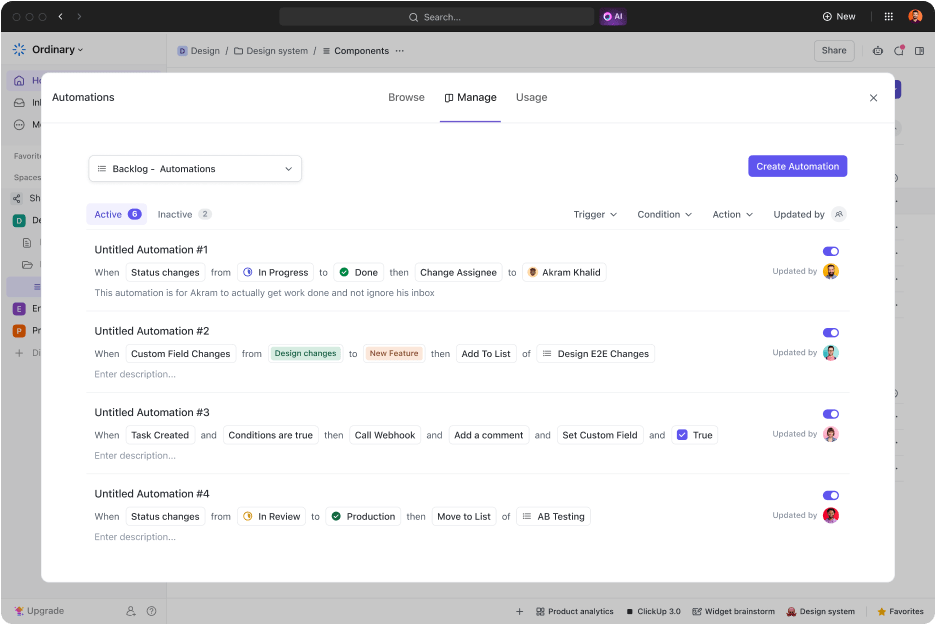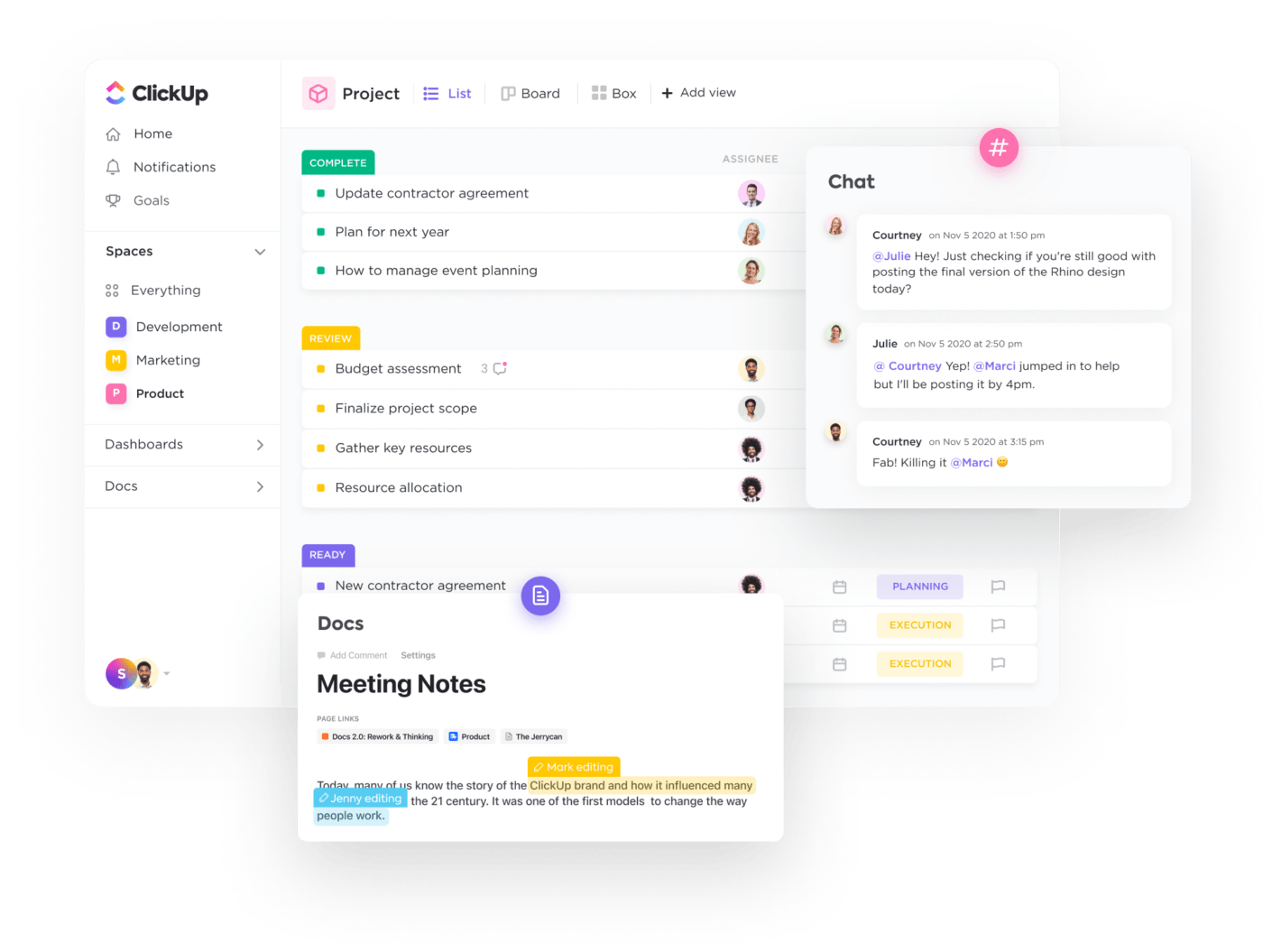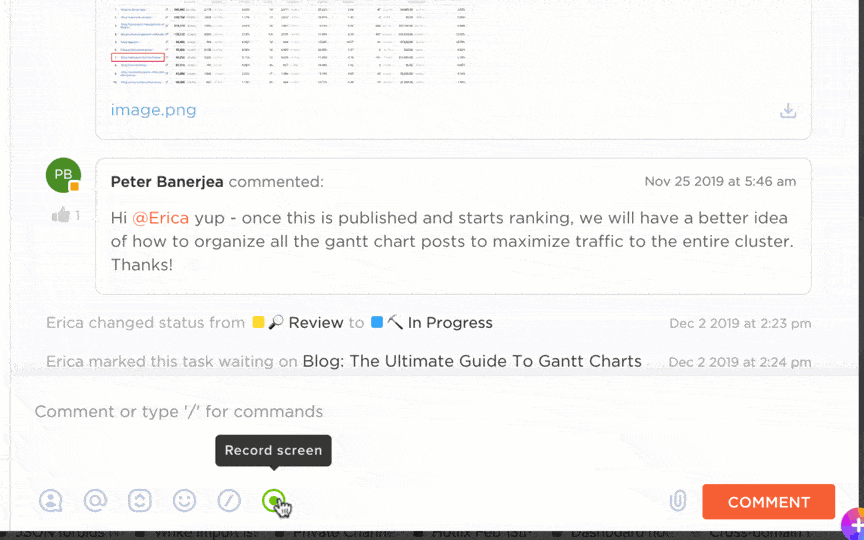How To Improve Your Sales Productivity

Sorry, there were no results found for “”
Sorry, there were no results found for “”
Sorry, there were no results found for “”
Did you know that most sales professionals spend only 30% of their time on actual selling?
The rest of the time, they’re caught up with non-selling administrative tasks, such as email correspondence, scheduling meetings, and travel planning—much of which isn’t a productive use of their time.
If you’re looking to build a more productive sales environment, you must equip your team with the tools, information, processes, and mindset they need to focus on achieving sales targets. The best part is that it’s all easier to implement than you think.
In this blog post, we’ll show you how!
Sales productivity refers to the efficiency and effectiveness of a sales team in achieving its sales goals and targets.
This involves maximizing output, getting more done in less time, and creating a work environment conducive to collaboration and robust time management.
Sales productivity measures how well your sales team generates revenue for your business in relation to the time and resources spent. This allows you to identify and eliminate any bottlenecks at the individual level and for your team as a whole—boosting sales productivity and improving your topline.
To understand your sales productivity, sales managers frequently look at metrics such as the average lead response time, the percentage of deals closed on the first proposal, and the deal win-loss ratio per sales rep to improve their teams’ productivity.
However, with rapidly growing technology, sales managers can do more, like generating sales content faster with AI, for instance.
The world of sales is continuously evolving across all industries. What would have constituted a best practice 10 years ago is obsolete today, especially as technology has advanced rapidly.
Here are some trends in sales productivity to keep in mind:
Before diving into the metrics, let’s clarify sales efficiency and effectiveness separately.
What’s the difference between these two terms?
Sales efficiency is a ratio that measures how much revenue a business makes for each unit of money spent on promoting and selling its products.
On the other hand, sales effectiveness is a more qualitative concept.
It assesses how well a sales team can produce favorable outcomes based on the quality of sales activities and their impact on the results, such as closing deals, nurturing customer relationships, or meeting specific business objectives.
For example, systematizing the sales process by reducing the time spent per customer (efficiency) might lead to more conversions. However, taking time to deeply understand customer needs and customizing the pitch (effectiveness) could result in higher-value sales or long-term partnerships.
Clearly, sales efficiency directly impacts the bottom line. As the company grows, sales teams need to improve the rigor of their sales processes and workflows to meet buyer demands and become a profitable growth engine.
Now, let’s explore common sales KPIs to evaluate for productivity:
Also known as sales per rep, this measures the ability of each sales rep to generate revenue for the business. For example, a rep generates $500,000 in revenue during the first quarter of the year.
It refers to the average time a lead takes to move through the sales pipeline, from first contact to deal finalization. For example, it could take an average of 90 days to close a deal from the first contact.
This is a core metric for assessing lead nurturing strategies. It measures the percentage of leads that convert into actual paying customers. It’s calculated as (Number of conversions / Number of leads) x 100%.
For example, if out of 500 leads, 50 convert into paying customers, the conversion rate would be (50 / 500) x 100% = 10%.
It calculates the number of successful deals closed by your sales team as a percentage of the total number of opportunities they pursued during a given time period. For example, if your team closed 20 deals out of 100 opportunities, the win rate would be (20 / 100) x 100% = 20%.
This metric tracks the average revenue generated per closed deal. It helps you understand the value of each sale and identify whether your sales team is focusing on high-value opportunities or smaller, quicker wins.
So, how do you make a difference in your sales team’s productivity? It’s about knowing which actions will have the biggest impact. Here are eight practical sales strategies to boost productivity.
This one should go without saying, but having clear goals and objectives is key to giving your sales team a direction. When everyone understands what they need to do and why it matters for the business, they’ll likely stay motivated and on track.
When setting goals, be sure to define success in terms of a certain number of customers added or high-value deals closed. Then, agree on metrics you’ll use to track everyone’s progress.
For example, if you want to increase sales productivity by 20% in the next quarter, set a goal for each rep to close at least a threshold number of deals or generate a minimum amount of revenue.
You can also use ClickUp’s SMART Goals Template to ensure your goals are clearly defined (Specific), trackable with numbers or milestones (Measurable), realistic (Achievable), aligned with your overall objectives (Relevant), and have a deadline (Time-bound).
The template streamlines goal-setting on a yearly, quarterly, weekly, and even daily basis. It allows you to:
On the other hand, the ClickUp Sales Project Management Software allows you to manage everything—from lead tracking to customer onboarding.
Create tasks with subtasks to ensure everyone knows what needs to be done and who’s responsible for which part. Add simple checklists to break down the steps for completing larger tasks, making tracking progress easy and ensuring nothing gets missed.

The software also minimizes manual data entry and keeps leads flowing smoothly through your sales pipeline with ClickUp Automation.
You can set it to automatically assign tasks at different stages, trigger updates based on customer activity, and even adjust priorities.
Using tools like Salesforce and HubSpot? No problem. Just plug in the right ClickUp Integration and you’re good to go. Any action taken in either of the tools, including ClickUp—like landing a new lead or creating a new task—automatically syncs between the platforms.

Lastly, with ClickUp Dashboards, you’ll get a clear view of how deals are progressing, who’s closing, and your team’s overall performance. Plus, with Cumulative Flow, Burnup, Burndown, and Velocity charts, you can quickly spot any hold-ups and keep things moving smoothly.

Onboarding and training are vital to ensuring your sales reps can hit the ground running. When you bring a new member in, be sure to give them all the resources they need, set clear goals for their first few days, and check in with them regularly as they settle in.
But the training doesn’t stop there, either.
Collaborate with your sales team to build a continuous learning program that helps them address their skill gaps and follow a step-by-step, goal-oriented training plan.
For example, if your sales team is distributed across locations, invest in programs like remote coaching and keep sessions brief and interactive so that they stay focused throughout. Use sales tools like ClickUp’s Training Rollout Plan Template to:
The template’s primary purpose is to ensure that the training is introduced in a structured manner, keeping all the sales reps on the same page so that they can do their job properly.
A typical sales process will include steps like prospecting customers, qualifying leads, presenting the product, handling any objections, closing the deal, and generating revenue. All your daily activities should support one or more of these core steps.
To standardize the sales process, a good place to start is by reexamining it as a whole and assessing how necessary each step or task is.
Ask yourself:
For instance, ClickUp’s Sales Process Template can make this job easier.
The template lets you and your team collaborate by organizing all relevant data in one centralized, no-code system—whether tracking leads, managing tasks, or visualizing your progress with charts.
You can assign tasks to team members, set due dates, and Assign Comments on ClickUp to set context. By regularly monitoring and adjusting your process, you can quickly adapt to any changes in the industry pulse or your sales strategy.
This template equips you to:
To ensure your sales team’s time is spent on the right things, assess what activities your sales reps are engaged in and how much time they devote to each.
Then, carefully examine the results to get an idea of the split between selling and non-selling activities. The data will help you make informed decisions about how to help your sales reps optimize the work week.
This could include investing in sales automation software for repetitive tasks or removing unnecessary steps in the process, such as having excessive internal sales meetings or overcomplicating email follow-ups.

Remember, though, that time spent isn’t the only metric.
You might wish to use the results to push for time management alternatives, such as investing in communication workshops to help your team get the point across to customers more effectively (and cut down on the number of extra interactions needed).
Salesforce reports that 81% of sales reps believe team selling is critical for closing more deals. However, aligning cross-functional teams, like marketing, product, and customer support, can be complex due to differing perspectives and goals.
To tackle this, you must use tools and processes that support internal collaboration. This will make it easier for your sales reps to gather the necessary insights and resources to present a compelling case to their prospects.
For example, with ClickUp Chat, the sales and marketing teams can instantly turn conversations into tasks, link relevant documents, and ensure all lead-related information is easily accessible within the same platform.
They can also use @mentions in tasks and docs to capture the teammates’ attention and drive immediate collaboration.

But a busy day can have messages flying in every direction and your team may feel overwhelmed at times. Enter ClickUp Brain, ClickUp’s built-in AI assistant.
ClickUp Brain’s writing assistant ensures your emails, proposals, and notes are flawless. Whether crafting outreach messages or updating customer info, this feature helps you perfect your writing without breaking a sweat.
And with the built-in spell check, you won’t even need to worry about typos or mistakes—it automatically checks everything as you go, right inside your tasks, without any extra plugins.
Once internal alignment is established, the focus can shift to ensuring the sales team communicates effectively with prospects. So, instead of relying on long comment threads, you can use ClickUp Clips to share screen recordings quickly and clearly present your ideas.
You can also turn any Clip into a task, making it easier to assign ownership and follow up. This results in faster decision-making, clearer messaging, and more closed deals.

Additionally, ClickUp Brain, when used in tandem with Clips, unlocks new avenues to improve sales productivity.
You can use it to create videos with real-time AI-generated transcripts, which can be especially useful when trying to win over customers with detailed demo videos explaining complex concepts.

ClickUp Brain automatically converts voice into text and uses AI to answer questions based on your discussions, keeping everything documented and actionable.
💡 Pro Tip: Conduct regular training sessions to equip your team with active listening and storytelling techniques. These skills will help them craft empathetic, personalized messages that speak directly to customers’ needs and pain points.
Team culture is more integral to increasing sales productivity than you might think, and the best way to build one is by helping every single sales rep feel empowered to do their best.
Encourage them to set goals and contribute to vision-setting and KPI-setting discussions. Organize peer-to-peer mentoring opportunities so that everyone can learn from each other.
Competition is an inevitable part of any sales team—why not share team metrics transparently and gamify the process to include non-monetary awards for unconventional wins?
Remember to be as open about discussing and learning from failures as you’re about celebrating wins; this is essential for fostering growth and resilience within your team.
Read More: Exploring a Day in the Life of a Sales Manager: Duties, Challenges, and Resources for Success
Structured performance reviews are crucial to promoting a culture of continuous improvement in your sales team. By regularly going over assigned KPIs with your reps, you help them stay focused on what matters and set achievable goals for themselves.
Keep the review process an open dialogue. Ask your reps how you can help them and what suggestions they have about the market as they see it or about any internal process improvements.
It’s a great opportunity to pinpoint any specific challenges they might be facing so you can give them the extra training and support they need.
For instance, they might point out that a new market they’ve been working on is bigger than expected, which can help you with sales capacity planning for the next quarter. You can always use standard sales report templates to simplify this part.
For instance, ClickUp’s Sales Tracker Template can be your go-to tool for monitoring everything in your sales process.
Here’s what makes it great:
This sort of visibility ensures your sales strategy is always based on hard data rather than guesswork.
If you’re wondering how to scale a sales team without comprising productivity, technology is the answer. There are multiple tools out there to help you streamline your sales cycle, including activity tracking, lead routing, email/LinkedIn outreach, and outbound calling.
ClickUp CRM Project Management Software, for example, allows you to eliminate silos and fast-track communication by integrating your emails within the platform.
With a single email hub, you can collaborate on deals, send project updates to existing customers, and onboard new ones. The software also enables you to organize your accounts with a scalable hierarchy of Folders and Lists, with granular permissions controlling who sees what.

The ClickUp CRM Template takes customer relationship management to another level—whether you’re a small business just getting started or an established enterprise.
The template provides an intuitive, central hub where you can easily manage leads, deals, accounts, and more and engage with customers at every stage of their journey.
With ClickUp’s CRM template, you can:
Your business leadership can play a major role in building a more productive sales team.
As the standard bearers, their commitment to setting clear expectations, encouraging and enabling collaboration, and regularly monitoring results can go a long way to improving sales productivity.
There are several ways to help sales leaders accomplish this.
This is crucial for any new process or practice to receive team-wide acceptance. When managers take accountability for their roles or are open about asking for help when needed, others will be open to emulating them.
Leaders can offer sales reps one-on-one sessions to coach them on specific skills or offer longer-term mentorship sessions to help them align more with their strengths and passions and chart their career trajectory.
Managers can build camaraderie and foster collaboration within sales organizations through team-building exercises and by involving sales reps to contribute to strategy design and vision setting.
The sales productivity plan is your most important asset for any kind of sales project management. Your leadership can play a core role in designing it by lending their experience and expertise to the goal-setting process.
They can also suggest and approve suitable tools for your sales tech stack to make your team more efficient and implement training programs that update them on the latest trends and technologies.
In addition, they can actively assess sales performance, identify problem areas, and make informed decisions about overcoming them.
Optimizing sales productivity is critical to your sales reps’ success, and the best way to achieve it is by working together. Be sure to regularly check in and align with everyone about their goal progress and what support they need to do more.
Technology can free up much of your team’s time, so investing in sales management tools is worthwhile. Of course, ClickUp stands out by offering an all-in-one sales enablement platform that covers every angle of sales project management.
From seamless CRM integration to powerful real-time analytics and templates you can customize to your needs, ClickUp doesn’t just support your sales workflow—it transforms it.
If you’re ready to elevate your strategy, measure sales productivity, and exceed targets, sign up for ClickUp for free.
Above all, ensure you’re upholding and promoting a culture of collaboration, learning, and well-being so that every sales rep feels empowered to do their best. Good luck!
© 2026 ClickUp